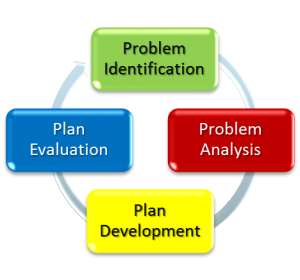Steps to identify and solve a performance issue
Performance is the major issue on the Linux Server that we are facing frequently. Yes, I’m discussing a sluggish server that may have high load. Before I disclose how to analyze and fix high load however, let’s take a step back and discuss the steps to fix an issue.
Following is the 4 step approach to identify and solve a performance issue.
Step 1: Understand the problem:
Half of the issue is solved when you plainly comprehend what the issue is. Before attempting to illuminate the performance issue, first work on plainly characterizing the issue. The additional time you spend on understanding and characterizing the issue will give you enough points of interest to search for the answers in the ideal spot. If possible, try to reproduce the problem, or possibly recreate a circumstance that you think nearly looks like the issue. This will later help you to validate the solution you come up to fix the performance issue.
Step 2: Monitor and collect information:
In the wake of characterizing the issue plainly, monitor the system and attempt to gather however much information as could possible be expected on various subsystems. Based on this information, come up list of potential issues.
Step 3: Dispose of and restricted down issues:
Subsequent to having a list of potential issues, list into every one of them and take out any non issues. Narrow it down further to see whether it is an application issue, or a system issue. Drill down further and narrow it down to a particular part. For instance, on the off chance that it is a system issue, narrow it down and distinguish the subsystem that is causing on the issue. On the off chance that it is an I/O subsystem issue, restricted it down to a specific partition, or strike gathering, or raid group, or LUN, or disk. Basically, continue drilling down until you put your finger on the main cause of the issue.
Step 4: One change at once:
Once you’ve narrowed down to a small list of potential issues, don’t attempt to roll out multiple changes at one time. In the event that you roll out multiple changes, you wouldn’t know which one fixed the original issue. Various changes at one time may likewise cause about new issues, which you’ll be chasing after instead of fixing the original issue. Along these lines, roll out one changes at once, and check whether it fix the original issue.

